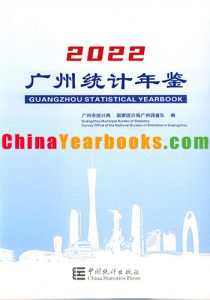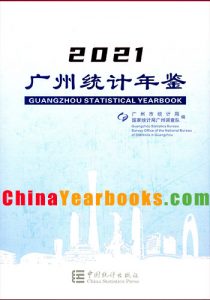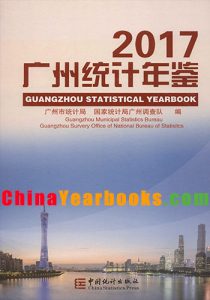Guangzhou Statistical Yearbook 2022 Download
Yearbook title:广州统计年鉴2022
Yearbook English title:Guangzhou Statistical Yearbook 2022
Published Date :10/2022
ISBN:978-7-5230-0000-7
Language : English and Chinese bilingual
Availability : Printed Version;Electronic Version(PDF Version)

Ⅰ.Guangzhou Statistical Yearbook 2022 is a reference book that comprehensively reflects the economic and social development of Guangzhou.Through a large number of statistical data,this book comprehensively and objectively records the economic and social development of Guangzhou in 2021 and important historical years. Ⅱ.The Yearbook contains the following 18 chapters:1.General Survey;2.Population;3.Employment and Wages;4.Investment in Fixed Assets;5.Energy and Environment;6.Government Finance and Banking;7.Price Indices;8.People’s Livelihood;9.City Construction;10.Agriculture;11.Industry;12.Construction;13.Transport,Postal and Telecommunication Services;14.Domestic Trade;15.Foreign Economy and Tourism;16.Service Industry above Scale;17.Science and Technology;18.Education,Culture,Sports,Public Health,Social Welfare and Others.In the Appendix,the main economic indicators of China,Guangdong Province,Hong Kong Special Administrative Region,Macao Special Administrative Region and the Guangdong-Hong Kong-Macao Greater Bay Area are collected. Ⅲ.The data in the Yearbook are mainly obtained from various statistical statements and sampling surveys conducted by Statistics Bureaus of all levels of government and the Survey Office of the National Bureau of Statistics in Guangzhou.Some data are collected from the departments of the provincial and municipal government. Ⅳ.Since 2014 Guangzhou administrative division has been adjusted.The original Huangpu and Luogang districts have been merged into the new Huangpu district.The former Zengcheng City and the former Conghua City are divided into districts.Since 2015,Guangzhou city administrative division has included 11 districts,which are Liwan district,Yuexiu district,Haizhu district,Tianhe district,Baiyun district,Huangpu district,Panyu district,Huadu district,Nansha district,Conghua district and Zengcheng district,excluding county-level cities. Ⅴ.Urban and rural integrated household survey is carried out in Guangzhou from 2014,statistical indicator system of urban and rural integrated household survey is changed greatly. Ⅵ.According to The Notice of the National Bureau of Statistics on the Implementation of the New National Standard of National Economic Industry Classification(Guotongzi [2017] No.142),the new classification of National Economic Sectors GB/T4754-2017 has been used from the statistical annual statements of 2017 and the periodic statistical statements of 2018. Ⅶ.Starting from 2018,a new chapter entitled “Service Industry above scale” has been added. Ⅷ.The prices used in calculation in the Yearbook are current prices except noted. Ⅸ.In any case the data of this book shall be deemed as the authoritative ones. Ⅹ.In the Yearbook all calculating errors of some total and regular figures for the difference of measuring units haven’t been adjusted. Ⅺ.Notations in this book:blank space indicates data are not available.”…” indicates not large enough to be rounded into the least unit of measurement.”#” indicates major item in a category. Ⅻ.In 2019,according to the results of the fourth national economic census,the regional GDP from 2008 to 2018,the industry from 2010 to 2017,the entire society’s employees at the end of the year from 2011 to 2018,and the total retail sales of consumer goods from 1992 to 2018 were revised. ⅩⅢ.In 2020,according to the results of the Seventh National Census,the permanent population and the proportion of permanent urban population from 2011 to 2019 were revised.

